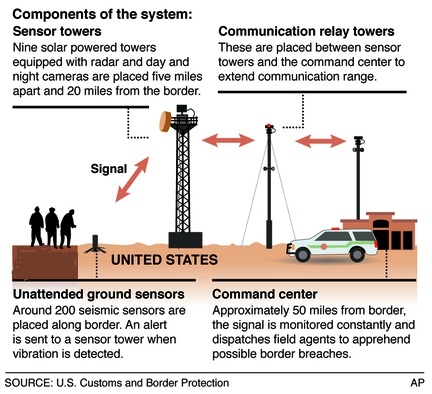EU Demonstrates MARSUR Network Prototype
Over the last five years, 15 Member States, led by Finland, and EDA have been working together to develop a Maritime Surveillance Network in support of CSDP operations and of homeland security based on existing national systems.
Six Member States (Finland, France, Italy, Spain, Sweden and the United Kingdom) have volunteered to demonstrate the functioning and added value of this network, that puts together maritime surveillance related information. To present this new MARSUR Networking system, EDA organised a Distinguished Visitors’ Day on 30 June 2011, in Brussels, to show real time exchange data.
This demonstration, led by Mr. Pasi Staff, Chairman of Project Team MARSUR, gathered more than 150 Senior high level representatives. The UK Minister for International Security Strategy, Mr. Gerald Howarth, and the Finnish State Secretary Mr. Marcus Rantala, also attended.
The key to the network is an interface costing 930,000 euros ($1.3 million), which links existing national military systems but could also link military and civil systems in the future. The primary cost to member states will be plugging their national systems into the interface.
Pasi Staff said the system is “to be used for the exchange of data and, depending on the will of member states, for sharing intelligence and can be used to contribute to improve decision-making.”
“It will enable early warning and the identification of threats approaching European homeland from the sea,” said John Mullin, EDA’s capability director, adding that it “can be easily technologically improved and expanded to more stakeholders.”
“It could be a military contribution to the European Commission’s common information-sharing environment,” he said, adding the network “will serve European Security and Defence Policy missions” and “will contribute to a better quality maritime picture.”
The EDA wants to bring other member states onboard and also plans to make the network more secure (it currently operates on a virtual private network) by about the end of 2013.
Gerald Howarth, the minister for International Security Strategy in the U.K.’s Ministry of Defence, described MARSUR as “a very good example [of pooling and sharing]” and a “natural area for collaboration to secure borders. “The threat is not from state-to-state warfare but asymmetric warfare,” he said. “With the Olympics [in London] next year, we must take into account that we could be at risk from terrorism from the sea.
“It’s ahead of what NATO has got, so there’s no conflict of interest there,” he said. “It is up and running at the Northwood headquarters and being used now.”
He also pointed out that Northwood serves as a joint EU and NATO headquarters, and that it had been confirmed as one of two maritime headquarters for NATO in the future.
He also said the U.K. would be reviewing its position as a member of the EDA in the fall of 2012. When in opposition, the Conservative Party had indicated it would probably withdraw from the EDA but last year decided to stay as a member.
He added that the U.K. looks to the EDA to deliver practical capability and value for money and wants to avoid duplication with NATO.
“Progress has been encouraging in the last 12 months,” he said. “The shortage of money all around has had an impact on the willingness [of member states] to pool and share. We think the U.K.-French [defense] treaty has had quite a positive effect, showing the way
on pooling and sharing,” he said.
An EU meeting on pooling and sharing is due to take place in Paris on July 13, said EDA Chief Executive Officer Claude France Arnould.
Source EDA and JULIAN HALE Def News

